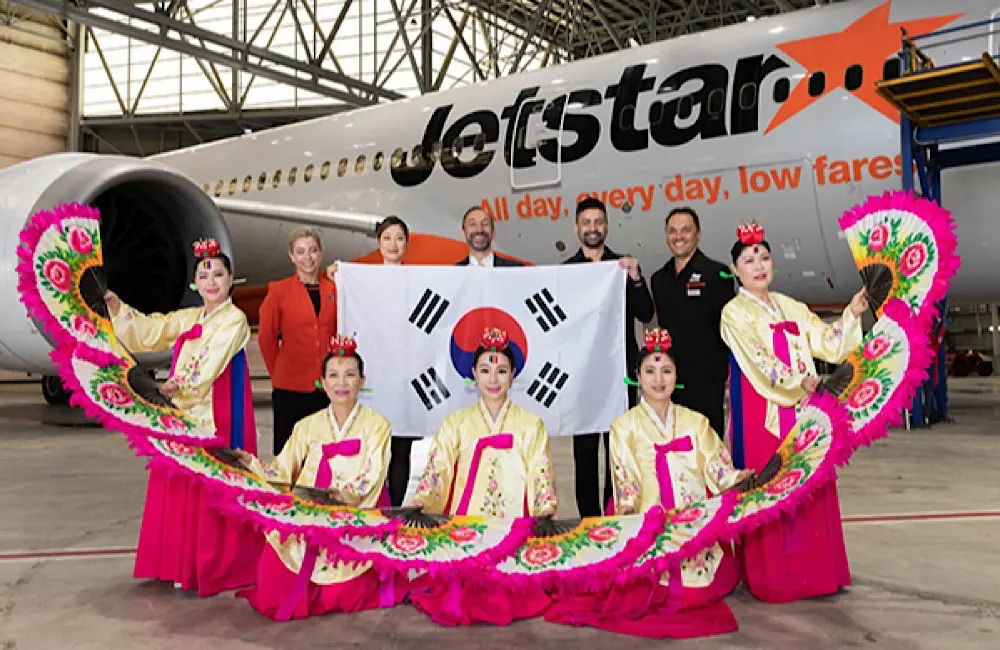Jetstar is doubling down on Asia, adding more than 130,000 new low-fare seats a year to high-demand routes across Thailand, Japan and South Korea.
The expansion is part of a broader shift by the Qantas Group, with the closure of Jetstar Asia and the wind-down of Jetstar’s Hawaii route freeing up aircraft and resources to invest in faster-growing markets.
More seats to Thailand
From October 2025, Jetstar will increase the number of return flights between Brisbane and Bangkok from three to five per week, just a year after the route launched. Melbourne will also receive one extra return service to Bangkok each week.
Holidaymakers heading to Phuket during the Christmas peak period will benefit from two additional return flights from Sydney, timed to meet growing demand from Australians heading to Thailand. More than 400,000 Jetstar passengers travelled to Thailand in the past year, with the airline highlighting it as one of its top-performing destinations.
The largest Australia-Korea carrier
Jetstar has also become the largest airline operating between Australia and South Korea, after adding three more weekly flights between Sydney and Seoul. The airline now flies 10 return services each week to Seoul from Sydney and Brisbane.
These services are part of a broader network shift towards high-demand destinations, with a focus on offering low-cost options to Asian hotspots.

Travellers heading to Japan for the 2025/26 snow season will also have more flight options with Jetstar adding one additional weekly return service between Sydney and Osaka from 14 December 2025.
Aircraft redeployment from Hawaii and Singapore
The added frequencies come as the airline prepares to retire its Sydney-Honolulu route, with the final flight scheduled for 24 October 2025. The route closure marks the end of Jetstar’s long-running trans-Pacific service to Hawaii and frees up Boeing 787 Dreamliner capacity to meet growing demand on high-traffic sectors.
The expansion is also supported by the Qantas Group’s recent decision to wind down Jetstar Asia, its Singapore-based offshoot, by 31 July 2025. The closure, announced earlier this month, will release 13 Airbus A320 aircraft and free up around US$500 million in capital. Jetstar has signalled that the move will allow it to refocus on core Australia and New Zealand operations, with Asia growth now led from Australia.
Executive Manager Commercial Planning Lyle Brownscombe said the network changes were part of a strategic investment into growth areas.
“We’re reshaping our international network to focus on high-demand destinations, adding an additional 130,000 seats across Thailand, South Korea and Japan each year, and allowing Australians to take off more, for less,” Brownscombe said.
“Our growth into Asia is backed by a significant investment in our fleet, including next-generation aircraft and upgrades to our Dreamliners, allowing us to fly further and more efficiently with more comfort for passengers.”
Flight schedule highlights
Effective from 17 June 2025
- Sydney to Seoul (Incheon)
- Brisbane to Seoul (Incheon)
Effective from October 2025
- Brisbane to Bangkok
- Melbourne to Bangkok
Effective from 14 December 2025
- Sydney to Osaka
Effective from 16 December 2025
- Sydney to Phuket
KARRYON UNPACKS: Jetstar’s expansion across Asia signals a clear pivot toward high-demand, leisure-driven markets in the region. While the retirement of the Hawaii route and wind-down of Jetstar Asia shift capacity away from lower-yield or strategically redundant routes, Jetstar’s renewed focus on Thailand, Japan and South Korea plays to its strength as a low-cost carrier meeting ongoing demand for affordable international travel. For agents, it presents more seat capacity and seasonal sell opportunities across key Asian routes.





